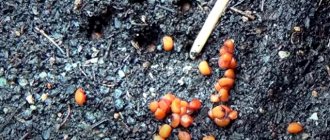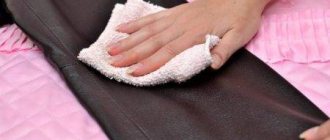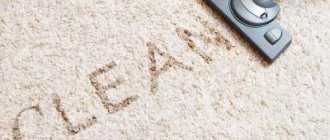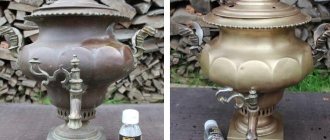Owners of marble products are always interested in stone care issues.
- How to preserve the original appearance of a product for many years?
- How to prevent the risk of stone damage?
- What to do if defects occur on the product?
Here we will tell you how to care for marble countertops, window sills, kitchen surfaces and stone furniture.
Since ancient times, marble has been an excellent material for interior design. It is noble, beautiful, durable and famous for its antiseptic properties. It is believed that bacteria and fungi do not multiply on the surface of the stone. Marble, like any other natural material, has several weaknesses. Your product will retain its original appearance only if you follow simple rules for caring for the stone. Note the importance of preventative care.
How to properly clean marble floors at home
Wet cleaning of marble floors is recommended 1-2 times a week. If contaminated with any substance, you should immediately blot the stain with a paper towel, napkin, or even a soft cloth. Just don’t leave it for too long so that it doesn’t get absorbed into the stone, and don’t rub it. Clean the floor in two stages - cleaning and protection:
- First, remove debris, dirt, and dust using a dry soft brush.
- Then they carry out wet cleaning during and after drying, and treat them with a special protective composition.
Concentrated products are designed to remove strong, stubborn dirt. There is no need to use circular movements; rub the floor along the marble fibers. You need distilled water and a microfiber mop. Highly hard and hot water negatively affects the shine of the floor.
See also
How to properly and quickly clean a shell and the best methods at home
Preventive protection of marble
About once a year, depending on the intensity of use of the product, its surface should be treated with a special impregnation for marble. This product creates a dust-, oil- and water-repellent barrier without compromising the aesthetic properties of the stone. Water-repellent impregnation is available in two versions: with a color enhancing effect and without any effect.
One important point - do not immediately apply the new product to the front surface of the countertop. Try it on an inconspicuous area first. Apply the product, for example, to the end side, let it dry, then compare this area with the untreated part. Occasionally it happens that the impregnation reacts with the stone and noticeably changes its color.
In all cases, we recommend using only certified substances - they are as effective and non-toxic as possible. You don’t have to worry about contact of the treated surface with food products - the certified product is officially approved for use in the vicinity of food products.
Ways to protect flooring
Several protection methods will help keep the stone shiny and beautiful.
Using wax
Wax creates a protective film that lasts a long time and preserves the expensive floor. However, there are also disadvantages - it requires periodic cleaning and updating of the layer.
Special dirt-repellent agents
Such compositions prevent various contaminants from penetrating deep into the marble, create a protective film, and make the floor easier to clean. Impregnation with dirt-repellent agents tints the floor, it shines and appears damp.
Combination of impregnation and wax
The combined method is considered the best. Mixed formulations are sold in stores and do not need to be prepared at home.
Polishing
Polishing protects the stone from abrasions and scratches. Special means are divided into several types:
- give the stone a matte shine without a mirror effect;
- products with a mirror shine;
- means that give the surface an anti-slip effect, and the floor becomes less traumatic.
Polishing restores dull floors.
Choosing a granite cleaner
The most difficult to remove stains are easier to clean with a powder composition that is slightly abrasive. It will not scratch the surface, but will have a more active effect on the same rust or limescale. If you don’t have a ready-made mixture on hand, use regular soda.
Among the “improvised” remedies against stubborn stains, a simple mixture of ground chalk and hydrogen peroxide is also recommended:
- Mix the ingredients to form a “thick sour cream” and use this paste to remove stains.
- Apply an even layer of about one centimeter and cover with film on top to prevent rapid drying.
- When you notice that the chalk has become a dry crust, remove it and wipe the surface. Usually this is enough, but if the contamination remains, the procedure is repeated.
Those who don’t want to waste time waiting will like ready-made products for cleaning granite:
- Wall Clean Bellinzoni cleaner (price from RUB 1,600 per 750 ml jar). The cleaner copes with old grease, dirt, paint, oil and soot from firewood.
- Acid-based cleaner FILA DETERDEK (from 1100 rubles per 1 liter). Cleaning granite will be gentle and safe, but remember to take precautions when working with an acidic solution.
- FILA SR 95 liquid stain remover (price approximately 1300 rubles). A spray of this brand for removing stains would also be good.
- Faber - problem stains can be easily removed with COLOURED STAIN REMOVER, which carefully cares for the surface of the stone and costs only 700 rubles.
- COLORED STAIN REMOVER - an excellent choice would be the CLEANER AND DEGREASER cleaner costing from 750 rubles. Removes grease, soot, oil stains, and removes stubborn wax coatings on any base.
In fact, there are a lot of preparations; when choosing a granite cleaning product in the store, ask what its composition is. Acid mixtures for cleaning granite are very effective, but are not recommended for constant use: they are used in doses and only in difficult cases.
Overview of special care products
There are many professional cleaners specifically for marble surfaces that will help keep your floors clean and shiny. They contain the correct pH level. Before use, carefully read the instructions. When choosing a detergent, it is advisable to consult with the stone manufacturer.
Stone Care kit
This set includes 3 products of 200 ml each. To clean the stone, it penetrates deep into the pores, draws out dirt, and cleans the surface. The protective coating is sprayed in a thin layer and wiped with a clean cloth. The polish is applied in an even layer to add shine.
Spray Rr/1
A popular foam product for home stone care. It is a spray for cleaning and adding shine.
Magnia Macchia
Stain remover paste is specially designed to remove traces of oil, coffee, and wine from marble surfaces. Removes deep stains and restores the beauty of the stone.
Detergent Lem-3
Concentrated detergent is designed to remove dirt and stains from marble, granite, and ceramics. Used in dilution with water and in pure form.
Rust eater
Gel for removing rust stains from marble, granite. Does not contain acids, applicable to all types of stone.
Stone Tech
Professional products for cleaning marble surfaces, used in cleaning companies.
Resolve
Marble cleaners have a mild chemical effect and a neutral pH level.
Simple Green
The American company’s universal products are designed to remove stains and stubborn dirt from various surfaces.
See also
Instructions for cleaning coffee machines from different manufacturers and the best products
Fila PS 87
Detergent for wax removal and degreasing is used in diluted form.
Sanet Sprinter Lavosan
Spray for washing marble is gentle on the surface, does not leave streaks, and adds shine.
Fila Marble Restorer
Designed for restoration of small areas of marble and other stone. If the surface is damaged by acids or precipitation, the product will help restore its original appearance. Consists of sponges, polish, gloss, gloves.
Kiiltoclean
The Finnish brand produces detergents and cleaning products for various surfaces. A wide range allows you to choose the right product for cleaning around the house.
Fila Claner
Neutral concentrated detergent for all types of natural stone flooring.
"Melon Zhs 9"
A concentrated detergent with an antibacterial effect is used for washing and disinfecting marble floors, tiles and other types of surfaces. Does not leave streaks, gives shine and freshness.
Mellerud
The company produces a variety of products for surfaces made of stone and others. Here are polish and impregnation for marble, cleaning and care products, rust and cement remover.
Docker Hydrofob oil
Designed to protect marble and other materials from moisture and atmospheric influences. The surface acquires water-repellent and anti-slip properties.
Akemi
Rust remover for quickly and efficiently removing stains from marble.
Syntilor Pietra
Removes rust, moss, lichens, lime deposits, cement deposits.
HG
Cleaner for marble and natural stone, suitable for regular use. Cleans and leaves a mirror shine.
Kristall-T Tenax
Water-based crystallizer for marble and calcium-containing natural stones. Restores the natural shine of worn surfaces. The result lasts for a long time. For internal use.
How to clean a stone sink
As already mentioned, marble is afraid of acidic environments, so avoid products containing citric, acetic and other acids. Do not use popular household pastes and powders with abrasive substances, which are popular when cleaning earthenware, ceramic and metal products. They clean really well, but are contraindicated for marble because they scratch the polished surface.
What you can use to clean your sink:
- A weak solution of ammonia in water. Pharmacies sell a 10% solution known as ammonia. A mixture of hydrogen peroxide and ammonia works well to remove yellow stains.
- Special preparations. For example, KREISEL MARMOR-REINIGER marble cleaner. The solution is already ready for use; just apply it to a regular kitchen sponge.
- Products for daily care of natural stone. For example, LEM-3 from the Italian manufacturer Bellinzoni. This is a concentrate, it needs to be diluted in a proportion of 2-3 tablespoons per bucket of water.
If suitable cleaning products are not available, a regular soda solution will do. It is abrasive, so be careful. Three tablespoons of soda per liter of water is enough.
How to remove stains correctly
They use their own remedies for different types of stains. The main thing is not to mix the components, use them separately. It is better to entrust the resulting cracks and chips to professionals for restoration.
Divorces
Stains from uncolored liquids should be blotted with a paper towel. Then wipe the contaminated area with a sponge soaked in a mild soap solution. Wipe dry with a towel. Polish with a soft cloth.
Organic
You can clean stains from coffee, tea, juice, gas water, and tobacco using hydrogen peroxide. Moisten a paper napkin with it, apply it to the stain, place a wet rag on top and cover with film. After 24 hours, remove the residue with a napkin, rinse with water and wipe. You can also use baking soda dissolved in warm water.
See also
Why is caustic soda used at home and how to dilute it
Grease and oil contamination
Cleaning contaminants from vegetable oil and butter is done with starch. Pour the powder onto the stain and remove it after absorption. Then the procedure is repeated and the starch is left for several hours. The surface is thoroughly washed with a special cleaning agent.
They also use acetone - moisten several paper napkins and place them on the area with the stain. Remove after a few minutes. A napkin soaked in alcohol helps.
Rust
To remove rust, you will need professional products. Before using them, you should carefully read the instructions and do not leave the substance on the surface longer than indicated.
Plant pollution
Mold, mildew, and algae can be easily removed using hydrogen peroxide or ammonia.
Ink
Peroxide and ammonia are used on white floors, and acetone on black floors. Then the surface is polished with wax.
Dye
Oil, acrylic, latex paint is removed from the surface of marble using vegetable oil. Solvents are not used. Then wash with soap and water.
Raindrops
Before it rains, stains are removed with dishwashing detergent and a thin metal sponge.
Daily care
Marble items are very easy to care for. A piece of soft cloth and suede, as well as water, is what you will need to clean the product from minor dirt. Suede is needed to polish the surface.
It happens that something spills or falls on the marble. There's no need to panic. He can withstand a lot. But it's better to act quickly. After all, if the stain remains on the marble for a long time, it will be very difficult to remove. It is necessary to treat the contaminated area with a damp sponge as quickly as possible.
What not to use to clean marble
Some substances are strictly not recommended for use on marble surfaces. Sand, chalk chips and other hard abrasive products are strictly not recommended for cleaning marble; they will leave scratches. Substances containing small amounts of acid will destroy the structure of the stone. Household detergents, salt, and vinegar are also not suitable for washing stone, as well as wine, cola, and orange juice.
Rags and brushes with a hard coating are also not suitable for stone. You should not use ammonia frequently. Wax should not be applied to white marble, as this will cause it to turn yellow. When using the vacuum cleaner, be careful not to scratch the stone with the nozzles.
Polishes and waxes
Over time, the polished surface loses its original shine, but it can be restored even at home - of course, if we are not talking about a completely worn out top layer. Polishes and waxes are used for this.
Treatment of stone with wax was used in ancient Rome.
Most modern polishes are based on paraffin or silicone. The polishing paste fills the micropores of the stone - and the surface gives the impression of being polished. Over time, detergents wash the substance out of the pores, and the procedure has to be done again.
The following compositions can be found on the market:
- liquid;
- and thick.
For vertical surfaces, naturally, the second option is preferable.
After application and polymerization of the product, the surface is polished with a soft, lint-free cloth, dry and clean, of course.
Protection of marble surfaces
After installation, drying and cleaning of the marble product, it is advisable to apply an additional protective coating or high-quality sealant to the stone. Using the sealant is not difficult, and its cost is quite affordable, taking into account the fact that such manipulation will prevent the appearance of defects and expensive repairs.
Seals designed to work with natural and artificial stone are impregnations, not sealants. They are characterized by water-repellent properties. Therefore, it is a mistake to believe that a sealant can protect marble from damage and stains, but such products help in the future when removing contaminants.
A whitish coating sometimes appears on new marble elements, which is quite normal. The fact is that mineralized salts begin to be released from the stone structure. The bulk of the plaque can be easily wiped off with a dry cloth. If the problem appears repeatedly, it is advisable to talk to the installer so that he can determine the source of the condensation.
To protect marble from scratches, it is recommended to use reliable stands, mats and napkins made of bamboo or fabric. Do not place angular objects on an unprotected stone surface.
In addition, marble can be damaged due to accidental spills of alcoholic beverages and citrus juices. To prevent trouble, this stone should be treated like an expensive wooden product.
To prevent damage to the marble floor, the legs of chairs and tables should be covered with some soft material. It is better not to subject thin marble to significant loads: there is no need to sit and stand on countertops or tables. Large mass can cause the formation of cracks and chips.
Personal hygiene supplies (lotions, toothpastes, perfumes) should be placed in special baskets or trays. It is not advisable to place bottles and tubes on marble, otherwise stains and other defects caused by exposure to aggressive chemicals will appear on the material.
Marble laying process
The stone processing industry has entered new stages of development, which makes it possible to extract marble for mass construction. In order for this expensive material to serve for a long time and faithfully, when laying it you need to follow some rules and know all the nuances of proper marble care.
To lay marble tiles you will need the following tools and materials:
- level;
- fasteners;
- Portland cement;
- scraper with a toothed rubber nozzle;
- sponge;
- bucket;
- acetone;
- sackcloth
- thick work gloves;
- respirator or protective mask;
- saw with diamond blade;
- protective tape;
- special glue;
- rag.
The video will tell you about some of the features of installing marble on the floor:
cutting
Sometimes marble tiles don't go in all the way, so they have to be cut. The best tool for cutting marble is a power saw with a diamond blade. Sometimes, due to cracks in the stone, tiles break during cutting. Experienced craftsmen easily cope with this problem; before cutting the tiles, they wrap them with protective tape. Before starting work, you must wear safety glasses.
Laying technology
- The surface is leveled and cleaned of dirt.
- Apply adhesive to a small area of wall or floor, as well as marble tiles, using a notched scraper.
- Lay the marble tiles and press firmly on them, being careful not to move the tiles to the side.
- All seams between tiles must be straight.
- After laying the tiles, they are left to dry for a day.
- The next day, grout is prepared from white Portland cement and the seams are filled with it. The seams must be moistened in advance with a sponge and distributed evenly with a scraper with a rubber nozzle.
- After ten minutes, the dried cement is sprinkled with water and the seams are tamped with a piece of burlap.
- Excess grout is removed and the finished surface is washed with water.
The glue is mixed strictly according to the manufacturer's instructions. If the tile is larger, it requires more complex fasteners. When laying on walls, a mesh is attached to them with a small gap. Mortar is poured into the gap. Holes are drilled in the slabs and secured to the mesh with anchors. This fastener is very reliable.
This method is also suitable for uneven walls; in this case, it is even used for tiling with small tiles.
The use of marble as a floor covering has become widespread. Standard modules or large-sized slabs with an area of up to 4 square meters are laid on the floor; their weight is very large, from 200 to 500 kg. Working with slabs is very difficult due to their heavy weight. If a marble floor is installed in public spaces, you need to choose varieties that have high abrasion rates.
Removing streaks and polishing
Coloring of a marble surface can occur even due to its short-term contact with a dry product or any liquid. To prevent contamination from being absorbed into the structure of the material, stains from wine, juice, tea and coffee must be removed immediately. To remove stains, you can use the following scheme:
- You need to blot the stain with a napkin. You cannot rub it, otherwise the dirt will be very difficult to remove.
- Treat the problem area with some effective cleaner or running water.
- The surface is thoroughly dried with a soft cloth.
- If necessary, all steps will have to be repeated.
To restore marble's beautiful shine, it can be polished with a soft cloth. In addition, special polishes can now be found on sale.
You need to make sure that the product is intended specifically for this stone, because cleaners for granite and other materials can ruin the surface.
Removing oil stains from lotions, oils, grease, cosmetics
Grease stains can leave dark marks on the surface of marble. If you notice such a stain, apply any absorbent powder, such as starch, to it as soon as possible. After some time, remove the powder and apply a new one. Do this several times. Leave the last portion of starch for 24 hours, and then remove it using any detergent for marble surfaces (alternatively, you can use an aqueous solution of ammonia). Wipe the marble dry, treat with impregnation and polish.
We recommend: Selling an apartment through a real estate agency: what are you risking
If the stain is not removed, use a solvent. Soak a napkin (several napkins) in acetone, open the windows and leave them on the stain. Do not keep the mixture for too long to avoid poisoning, as acetone vapors are poisonous, and do not use acetone near heating appliances and gas stoves.











